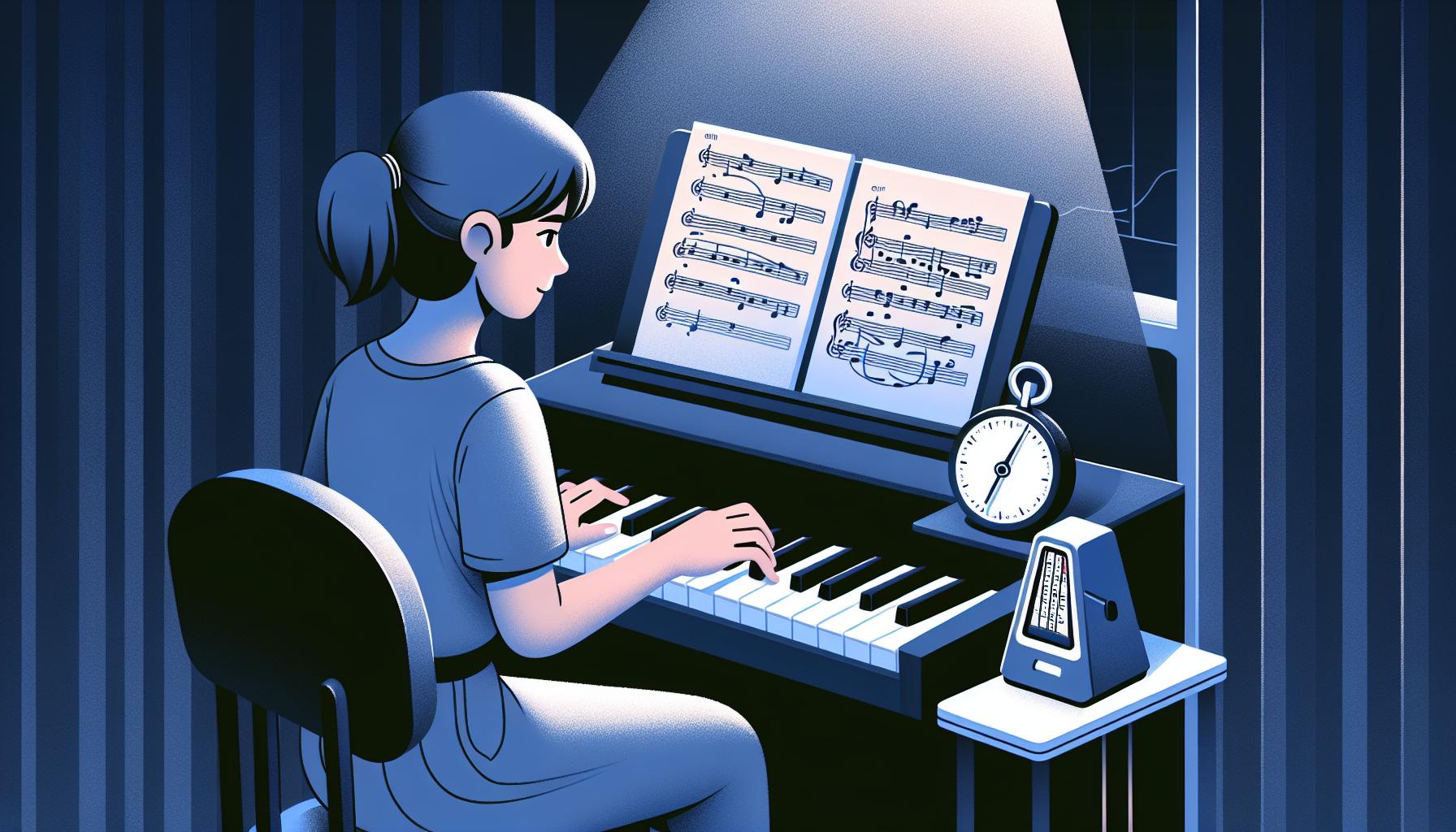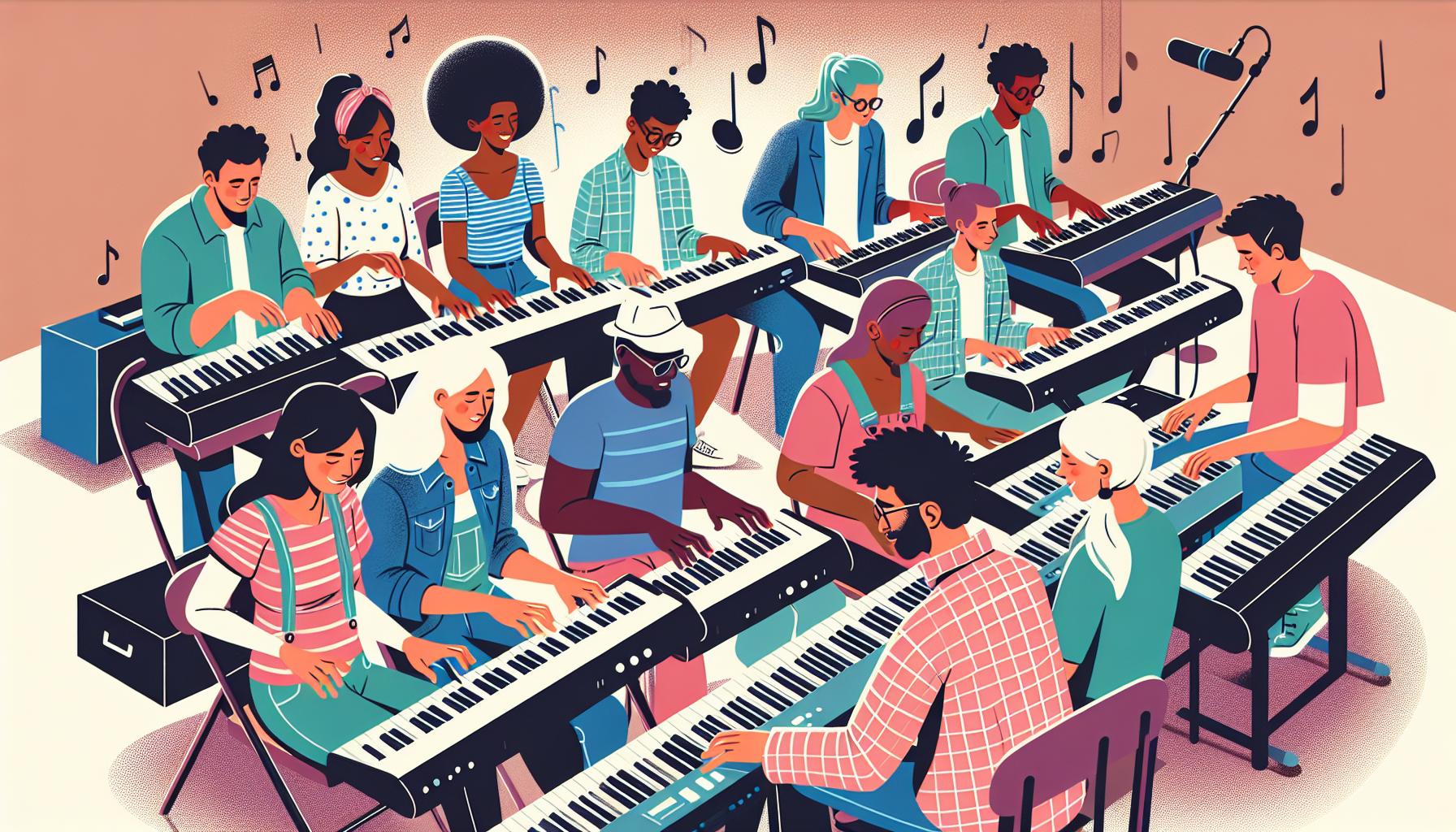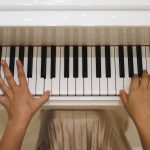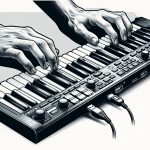Learning to play the keyboard at home might seem like a daunting task, but it's actually more achievable than most people think. With the right approach and resources, anyone can start tickling the ivories in no time. It's not just about having the instrument; it's about creating a structured plan that fits into your daily routine.
The beauty of teaching yourself is the flexibility it offers. You can tailor your practice sessions to your own pace, focusing on the songs and techniques that interest you the most. Plus, there's a wealth of online tutorials, apps, and communities out there ready to support your musical journey. Let's dive into how you can make the most of these resources and set the stage for your self-taught keyboard adventure.
Setting Up Your Practice Space
Creating an inviting and functional practice space is a crucial step in the journey to teach oneself the keyboard at home. This space doesn't need to be large or elaborate but should be dedicated to your musical growth. It's a place where distractions are minimized, and inspiration flourishes.
Firstly, choose a quiet area in your home where interruptions are less likely. This could be a corner of a bedroom, a home office, or even a spare room if available. The goal is to have a go-to spot that signals to your brain, "It's practice time." Lighting is also key. Ensure the space is well-lit, ideally with natural light, to keep you alert and minimize eye strain during sessions.
The right equipment—a comfortable, adjustable bench or chair and a sturdy stand for your keyboard—are non-negotiables. Your posture matters a lot, and having a setup that supports your back and wrists can prevent long-term injuries. Moreover, investing in a good pair of headphones can make practice sessions more immersive, allowing you to catch nuances in the music and perhaps practice without disturbing others.
Organizing your space contributes significantly to your learning efficiency. Have a storage system for your music sheets, notebooks, and any other learning materials. This could be a simple set of shelves or a folder system. Being organized saves time and helps transition smoothly into practice mode.
Another aspect to consider is personalization. Your practice area should be a reflection of what motivates you. Whether it’s posters of your favorite bands, inspirational quotes, or simply a color scheme that gets you in the right mindset, make the space yours. A visually appealing setup not only draws you into practicing more often but also keeps the creativity flowing.
Incorporating technology into your space efficiently can greatly enhance your practice sessions. With the array of apps and online tutorials available, having a tablet or laptop within easy reach can be a game-changer. It's important, however, to ensure these tools don't become distractions. Use them wisely to supplement your learning, not hinder it.
Lastly, don't forget about the importance of acoustics. While not everyone can customize their room's acoustics, simple adjustments like positioning the keyboard away from walls or adding soft furnishings can improve sound quality.
Choosing the Right Keyboard for You

When embarking on the journey of teaching oneself keyboard at home, selecting the appropriate instrument is a crucial step that should not be overlooked. The market offers a wide array of keyboards, each designed to cater to different levels of expertise, musical interests, and budget constraints. Understanding the variations and features of these keyboards is vital for making an informed decision that aligns with one's personal goals and preferences.
For beginners, it's often recommended to start with a 61-key keyboard. This size is manageable for novices, providing a good balance between range and affordability. However, as one's skills progress, upgrading to a 76-key or 88-key keyboard may be beneficial to explore the full range of piano compositions. The added keys make these larger keyboards suitable for advanced pieces and improve long-term learning opportunities.
Another important aspect to consider is touch sensitivity. Keyboards with touch-sensitive keys respond to the force with which they're pressed, similar to an acoustic piano. This feature is crucial for developing dynamic control and expressive playing. For a more authentic piano experience, weighted keys are a feature that mimics the resistance and rebound of traditional piano keys, enhancing the transition should one switch to an acoustic piano in the future.
The type of keyboard one chooses can also greatly affect the learning experience. Digital pianos offer sound and feel close to that of an acoustic piano, ideal for students focused on classical music. On the other hand, electronic keyboards provide a range of sounds and rhythms, suiting those interested in a variety of musical genres.
| Feature | Recommended For |
|---|---|
| 61-key Keyboard | Beginners |
| 76 or 88-key Keyboard | Intermediate to Advanced |
| Touch Sensitivity | All Levels for Expressive Play |
| Weighted Keys | Those Aiming for an Acoustic Feel |
| Digital Piano | Classical Music Students |
| Electronic Keyboard | Variety Music Enthusiasts |
Investing in a quality keyboard is an investment in one's musical journey. It's advisable to try out different models in person if possible. This allows for a firsthand experience of the feel and sound, ensuring the chosen keyboard meets personal expectations and preferences. Moreover, reading reviews and seeking advice from more experienced musicians can provide valuable insights that guide the decision-making process.
Developing a Practice Schedule

Embarking on the journey of self-teaching keyboard demands not just the right instrument, but also a disciplined approach to practice. Consistency is key, and crafting a practice schedule tailored to one's lifestyle and goals can significantly elevate the learning experience.
First off, it's critical to set realistic expectations. Most beginners envision swift progress, diving into complex pieces headfirst. However, mastering the keyboard is a marathon, not a sprint. Starting with as little as 15 to 20 minutes a day can prevent burnout and encourage steady progress. As one's skills and concentration improve, gradually increasing practice time becomes beneficial.
A well-structured practice session involves more than just playing songs from start to finish. Dividing time between different activities enhances efficiency. A typical session might look something like this:
- Warm-up exercises (5-10 minutes): Engage in finger exercises and scales to prepare your hands and mind.
- Technical drills (5-10 minutes): Focus on specific skills, such as hand coordination or playing with touch sensitivity.
- Repertoire practice (10-15 minutes): Spend time learning new pieces or perfecting known ones.
- Ear training and improvisation (5-10 minutes): Foster musicality by playing by ear and experimenting with creating music.
Incorporating a variety of activities keeps practice sessions engaging and covers multiple aspects of keyboard mastery. It also allows for addressing both weaknesses and strengths in one’s playing technique.
Another vital component of an effective practice schedule is flexibility. Life’s unpredictable nature might not always accommodate a strict timetable. Thus, having a flexible approach, one that permits adjustments based on daily commitments and energy levels, ensures that practice remains a joy rather than a chore. If a day's intense study isn’t feasible, even a brief session that maintains the habit can be invaluable.
Record-keeping can also play a significant role in one’s progress. Keeping a practice log helps in setting daily goals, tracking progress over time, and reflecting on what works and what doesn’t. This can include notes on pieces learned, techniques improved, or areas needing further work. By revisiting these logs, learners can appreciate their growth and stay motivated.
Utilizing Online Tutorials and Apps

In today's digital age, a wealth of resources is available at the fingertips of aspiring musicians. One of the most effective ways to supplement self-teaching efforts on the keyboard is through online tutorials and music learning apps. These platforms offer structured lessons that range from beginner to advanced levels, often incorporating interactive exercises that make learning both engaging and effective.
Many online tutorials are led by experienced musicians who share their insights and techniques. These tutorials often cover a wide range of topics, including fundamental keyboard skills, music theory, and genre-specific playing styles. The step-by-step approach of these lessons allows learners to progress at their own pace, revisiting concepts as needed to ensure comprehension and mastery.
Music learning apps, on the other hand, utilize technology to create a personalized learning experience. Features like real-time feedback, progress tracking, and gamified challenges help to keep students motivated. Some popular apps also include AI-powered tutors that listen as you play, offering immediate corrections and tips to improve your playing. This instant feedback loop is instrumental in developing correct techniques from the start.
A key benefit of using online tutorials and apps is the flexibility they offer. Unlike traditional music lessons that require scheduling and travel, these digital resources are accessible anytime, anywhere. This ease of access makes it easier for individuals to integrate practice into their busy lives, ensuring they can consistently dedicate time to their musical development.
Moreover, many online resources are interactive and community-oriented. Forums and social media groups provide opportunities for learners to connect, share experiences, and support each other's growth. This sense of community can be incredibly motivating, reminding learners that they're part of a global network of music enthusiasts all striving to improve.
While the convenience and accessibility of online tutorials and apps are undeniable, it's crucial for learners to choose resources that align with their learning objectives and personal preferences. Some may prefer the structure and comprehensiveness of subscription-based platforms, while others might find better value in free tutorials available on platforms like YouTube. Taking the time to explore and evaluate different resources ensures that learners can find the best fit for their educational needs and learning style.
In addition to formal tutorials and apps, exploring other digital resources such as online metronomes, virtual keyboards, and sheet music archives can further enhance the learning experience. These tools aid in practice by providing additional support materials that are essential for developing a well-rounded skill set.
Engaging with Keyboard Communities

When embarking on the journey of teaching oneself keyboard at home, finding a community of like-minded individuals can significantly enhance the learning experience. Keyboard communities, both online and offline, offer unique opportunities for learners to connect, share, and grow together.
One of the prime advantages of engaging with keyboard communities is the support system they create. Learning an instrument solo can sometimes feel isolating, but communities provide a sense of belonging. They're places where questions can be asked, achievements celebrated, and challenges shared. Whether it's through forums, social media groups, or local meetups, becoming part of a community ensures learners are never alone on their musical journey.
Online platforms have made it incredibly easy to find communities that resonate with individual learning styles and preferences. Websites like Reddit and Discord host vibrant subcommunities dedicated to keyboard learning, where members range from beginners to seasoned musicians. Here, learners can:
- Seek advice on technique and practice routines
- Share recordings to get feedback
- Participate in challenges and competitions
- Discover new music and learning resources
On the other hand, offline communities provide tangible experiences that can deeply enrich one's learning. Local music schools often host workshops and jam sessions where learners can experience playing with others in real-time. These gatherings are not only fun but also crucial for developing aural skills and understanding the dynamics of group play.
Another key benefit of engaging with keyboard communities is the access to a vast pool of knowledge and experiences. Learning from others' journeys can inspire and provide insights that are not easily found in textbooks or tutorials. It opens up new perspectives and learning methodologies that can be tailored to one's personal growth path. Moreover, it's not uncommon for long-lasting mentorships and friendships to form within these groups, further enriching the learning process.
For those looking to contribute as well as learn, communities offer various avenues to share knowledge and experiences. Writing blogs, creating tutorial videos, or hosting live Q&A sessions are just a few ways members can give back and help others along their learning paths.
Engaging with keyboard communities is a multifaceted approach to learning the keyboard at home. It's not just about the notes and techniques; it's about becoming part of a global network of music enthusiasts who support and inspire each other. To maximize the benefits, learners should actively participate and contribute to the communities they join, embracing the collaborative spirit that makes music learning so enjoyable.
Conclusion
Teaching yourself keyboard at home opens up a world of possibilities. By diving into the vibrant communities of keyboard enthusiasts, both online and offline, learners unlock a treasure trove of support and inspiration. It's not just about hitting the right notes; it's about connecting with others who share your passion. Engaging in these communities not only enhances your skills but also enriches your musical journey with friendships and mentorships that go beyond the keyboard. So, step into this collaborative world, share your story, and let the collective wisdom of fellow music lovers propel you forward. Remember, the journey of learning music is as beautiful as the melodies you aspire to play.
Harlan Kilstein began playing piano during covid with no piano background at all. He taught himself how to play learning what to do and what not to do.
Today he's an advanced intermediate player and can help you grow in your skills because he learned all this on his own.








